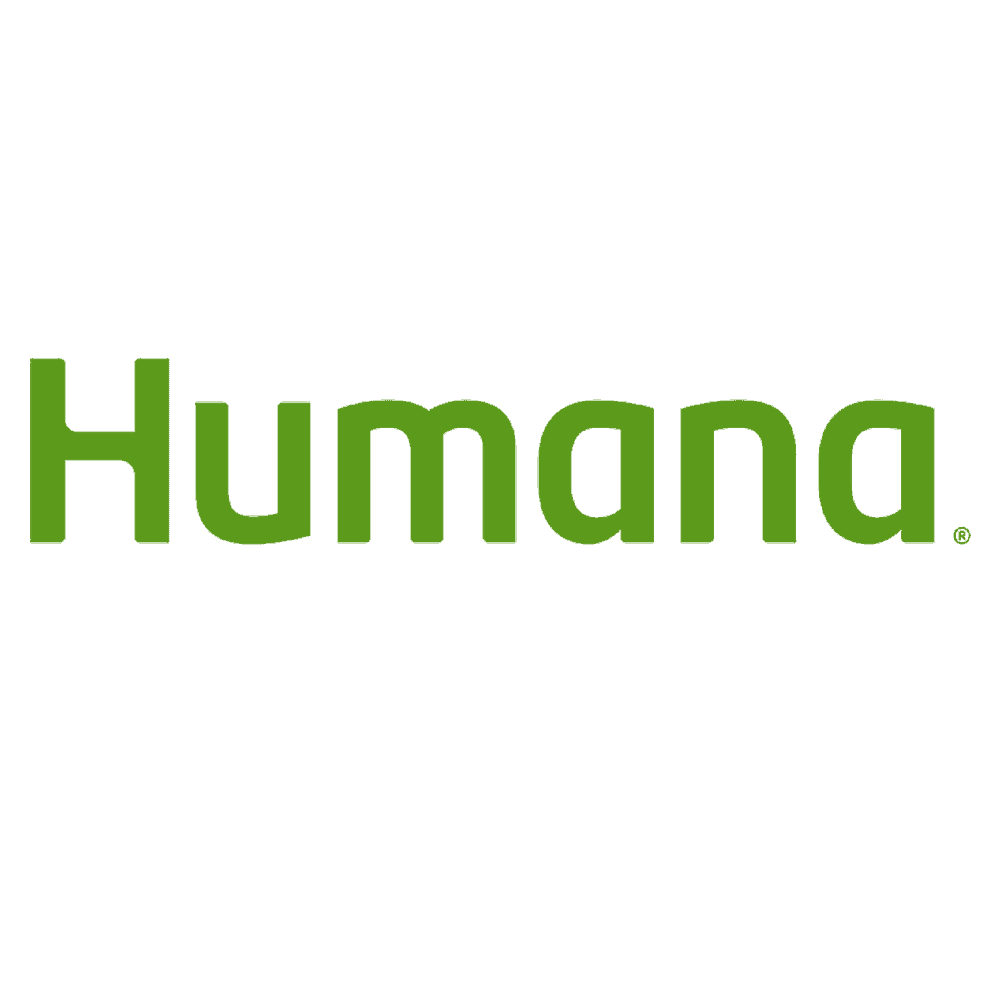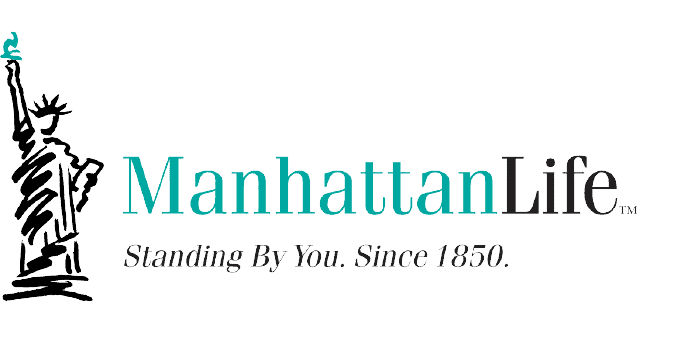
Mutual of Omaha Medicare Supplement Plan Reviews in 2025

Founded in 1909, Nebraska-based Mutual of Omaha has been a trusted name in Medicare Supplement Insurance since shortly after Medicare began in 1965. The company has built a strong reputation for financial stability and customer satisfaction. Our team spent over 50 hours researching their Medigap plans and speaking with customer service. We found that Mutual of Omaha consistently earns high marks from customers and has far fewer complaints than the industry average.
That said, there are a few drawbacks. Mutual of Omaha offers fewer plan options than some carriers. This could be a negative if you’re looking for a specific type of coverage. Their premiums also tend to be on the higher side, though their discounts can help bring costs down. In the following sections, we’ll walk through the details of their Medicare Supplement plans and explain why they remain one of our top picks for Medigap coverage.
Mutual of Omaha Medicare Supplement Pros and Cons
Pros
- Low complaint rates: Mutual of Omaha’s Medicare Supplement complaint rate is below the national average. It only has 13 percent of the complaints it should for a company of its size.1
- Generous household discount: Mutual of Omaha’s household discount of up to 12 percent is larger than many of its competitors. Available in most states; some require the second household member also to have a Mutual of Omaha Medigap policy.
- Strong financial stability: Mutual of Omaha’s long-standing history and excellent financial ratings help reassure long-term policy stability.
- Wellness discount program: Mutual of Omaha’s Mutually Well program offers members access to discounted gym memberships and wellness products, adding value beyond standard Medigap coverage.
Cons
- Higher premium costs: Mutual of Omaha’s base premiums are generally higher than the lowest-cost alternatives.
- Slightly below-average spending on care: Our research showed that Mutual of Omaha spends approximately 82 percent of premium dollars on member benefits, still well above the legally required minimum but below the industry average of 83.9 percent.2
- Limited availability in certain states: Mutual of Omaha does not offer Medigap plans in Massachusetts.
Did You Know? According to a recent study by the Kaiser Family Foundation, about 23 percent of Medicare beneficiaries have a Medicare Supplement Insurance policy to help cover out-of-pocket costs.3
Overview of Mutual of Omaha’s Medigap Plans
The plans available will depend on your location, age, and gender. For a 65-year-old man living in suburban Philadelphia, we got five options. Here’s a look at what those coverages include:
| Plan | G | N | High Deductible G | A | B |
|---|---|---|---|---|---|
| Price, monthly (can also pay annually, but no discount) | $239.89 | $155.22 | $63.78 | $172.02 | $176.16 |
| Medicare Parts A and B coinsurance Hospice care coinsurance First 3 pints of blood/year |
Yes | Yes, after co-pays | Yes, after $2,870 deductible | Yes | Yes |
| Skilled nursing facility coinsurance | Yes | Yes | Yes, after $2,870 deductible | No | No |
| Medicare Part A deductible | Yes | Yes | Yes, after $2,870 deductible | No | Yes |
| Medicare Part B deductible | No | No | No | No | No |
| Medicare Part B excess charge | Yes | No | Yes, after $2,870 deductible | No | No |
| Foreign travel emergency | Yes | Yes | Yes, after $2,870 deductible | No | No |
When comparing Medigap plans, remember that all Medigap policies are standardized. This means policies with the same letter offer identical basic benefits, no matter which insurance company you choose.
To learn more about how Medigap policies work, read our guide to Medicare Supplement Insurance.
FYI: In Minnesota and Wisconsin, Medigap policies are standardized differently, and Mutual of Omaha offers plans that comply with these states’ unique requirements.
Finding the Right Mutual of Omaha Medigap Plan for Your Needs
Which of Mutual of Omaha’s Medigap plans are right for you? Let’s dive deeper into each offering, with the caveat that you may have different plans available depending on your location and other factors.
Plan G
Plan G is the most popular plan, ideal for people who prefer:
- Upfront payments
- Great protection, covering everything except the Medicare Part B deductible, which is $257 in 2025
- No surprise out-of-pocket costs.
Its drawback, however, is its high monthly premiums. At $239.89 a month, it’s the most expensive option, ideal for someone who wants the most protection.
Plan N
Plan N is similar to Plan G, but it doesn’t cover the Medicare Part B excess charge. Rather, you’ll pay a $20 copay for each doctor’s visit and a $50 copay for each emergency room visit. This plan is ideal for someone who wants:
- A combination of upfront payments and pay-as-you-go
- Strong protection
High Deductible Plan G
Plan G can actually be the most affordable plan on a monthly basis, costing only $63.78 a month. The catch? You’ll have to meet a $2,870 deductible before you can get any of your benefits, which are identical to the benefits of Plan G. This plan is best for someone who wants low monthly costs and doesn’t mind a high deductible. If you are a generally healthy person who just wants a safety net, this plan could save you money.
Plan A
Plan A provides only basic overage, which includes:
- Coinsurance for Medicare Parts A and B
- Coinsurance for hospice care
- First three pints of blood per year
It costs $172.02 a month, cheaper than Plan G, but note that you’ll have to pay for out-of-pocket costs in addition to your premiums.
Plan B
Finally, Plan B has a bit more coverage than Plan A, covering the Medicare Part A deductible. However, you’ll have to pay out-of-pocket for services like:
- Facility care coinsurance
- Foreign travel emergencies
- Part B deductible ($257)
- Part B excess charges
- Skilled nursing
Understanding Mutual of Omaha Medigap Plan Costs
Our analysis of Mutual of Omaha’s Medicare Supplement pricing reveals several important factors that could influence your premium. It can vary significantly depending on your geographic location, age, gender, and the specific plan you select.
Quick Tip: When comparing Medigap providers and speaking with Medicare specialists, we discovered that premium differences represent the primary distinction between companies offering the same standardized plans. This emphasizes the importance of comparison shopping and considering additional value factors beyond the monthly premium.
Mutual of Omaha’s discount structure offers an impressive household premium discount of up to 12 percent, which is substantially higher than industry norms. This discount applies when you live with a spouse, domestic partner, or other adult. For comparison, our research of competitors revealed that Aetna offers a 6 percent household discount.
Based on quotes we gathered during our research, here’s an example of Mutual of Omaha’s pricing structure for a 65-year-old male in Wynnewood, Pennsylvania:
| Plan | Price, monthly* |
|---|---|
| A | $172.02 |
| B | $176.16 |
| G | $239.89 |
| High Deductible G | $63.78 |
| N | $155.22 |
*Premium ranges shown before any applicable discounts
That being said, Mutual of Omaha’s premiums tend to be somewhat higher than those of their lowest-priced competitors. For example, when comparing Plans G and N across multiple markets, we found Mutual of Omaha’s premiums were approximately 23 percent to 31 percent higher than the lowest available options on Medicare.gov.
| Plan | Price, monthly | Medicare.Gov range |
|---|---|---|
| A | $172.02 | $112-$595 |
| B | $176.16 | $154-$569 |
| G | $239.89 | $140-$706 |
| High Deductible G | $63.78 | $39-$93 |
| N | $155.22 | $117-601 |
However, after applying their household and online enrollment discounts, this difference narrowed considerably for eligible applicants.
Quick Tip: We found that Mutual of Omaha often uses an “attained-age” pricing method, meaning premiums increase as you age. Be sure to ask about their specific pricing methodology in your area, as this affects how your premiums will change over time.
Enrolling in a Mutual of Omaha Medicare Supplement Plan
Mutual of Omaha provides telephone assistance through dedicated agents who are available during extended business hours. While some competitors like Anthem Blue Cross Blue Shield offer in-person agent consultations, Mutual of Omaha’s online application process is particularly user-friendly, making digital enrollment straightforward even for less tech-savvy seniors.
Here’s a streamlined guide to applying for Mutual of Omaha Medicare Supplement coverage:
- Visit Mutual of Omaha’s Medicare Supplement website and enter your ZIP code and basic information to see available plans.
- Review each plan’s coverage details and premium costs carefully.
- Keep your Medicare card nearby, as you’ll need your Medicare effective dates to continue.
- Answer the health questions, which help determine eligibility and rates.
- Complete the application online and choose from flexible payment options, including automatic bank drafts or direct billing on a monthly, quarterly, semiannual, or annual basis.
Comparing Mutual of Omaha to Other Medigap Providers
When evaluating Mutual of Omaha against major competitors, we discovered several vital distinctions that might influence your choice.
Mutual of Omaha and UnitedHealthcare: Comparing Industry Leaders
We identified several key differences between Mutual of Omaha and UnitedHealthcare. UnitedHealthcare’s AARP Medicare Supplement plans offer slightly more plan options than Mutual of Omaha, with additional standardized plans available in many markets. Both companies maintain strong customer satisfaction records, although Mutual of Omaha’s complaint ratio is notably lower.
For price-conscious consumers, UnitedHealthcare’s AARP plans may be more expensive with their standard rates, but may be cheaper with discounts.
| Monthly price | Mutual of Omaha | UnitedHealthcare (includes discounts) | UnitedHealthcare (no discounts) |
|---|---|---|---|
| A | $172.02 | $178 | $232.65 |
| B | $176.16 | $188.78 | $343.24 |
| G | $239.89 | $190.25 | $345.91 |
| High Deductible G | $63.78 | N/A | N/A |
| N | $155.22 | $127.23 | $231.00 |
For a detailed analysis of this alternative, see our complete UnitedHealthcare Medigap review.
Mutual of Omaha vs. Humana: Service Area and Plan Variety
Humana differentiates their Medicare Supplement offerings through broader geographic coverage and a more extensive plan selection. We found that Mutual of Omaha doesn’t offer coverage in Massachusetts, but Humana provides coverage options nationwide.
More significantly, our examination of plan availability revealed that Humana offers up to eight different Medigap plans, depending on your location, which is substantially more than Mutual of Omaha’s limited lineup. On the other hand, Mutual of Omaha’s 12 percent household discount outpaces Humana’s typical discounts of 5 percent to 7 percent.
As for supplemental benefits, we discovered Humana includes SilverSneakers fitness membership at no additional cost, while Mutual of Omaha’s Mutually Well program requires a separate fee. For a comprehensive evaluation, check our Humana Medigap review.
Additional Benefits
Our investigation into Mutual of Omaha’s supplemental offerings uncovered several distinguishing features. These extras don’t alter the fundamental Medigap coverage, but they may enhance the overall value for members.
Wellness Discount Program
Mutual of Omaha’s Mutually Well program provides members with access to discounted rates on various wellness services. Participants can save on gym memberships, wellness products, and services, as well as an app for planning and tracking fitness activities.
We found Mutual of Omaha’s wellness benefits comparable to those from other major insurers, although not as extensive as those of some competitors. For example, unlike UnitedHealthcare’s free program Renew Active, Mutual of Omaha’s Mutually Well program typically requires a separate membership fee of $29.99 per month.
Quick Tip: Mutually Well program’s availability varies by location. Before enrolling, confirm whether this benefit is available in your area and what specific discounts apply to services you will likely use.
Vision and Hearing Discounts
We’ve also identified discounts on hearing aids, vision exams, and eyewear from certain providers. These could generate meaningful savings for members who regularly use these services, as traditional Medicare provides limited coverage for vision and hearing care.
Most major Medigap providers offer similar discounts, making this a standard rather than a distinguishing feature. However, for seniors with ongoing vision or hearing needs, these discounts can represent valuable supplementary benefits beyond the core Medigap coverage.
Customer Service
In our experience, Mutual of Omaha has exceptional customer satisfaction metrics and multiple contact channels. Data from the National Association of Insurance Commissioners shows that Mutual of Omaha’s Medicare Supplement plans generate remarkably fewer customer complaints relative to their market share. This finding suggests superior performance in claims processing, billing accuracy, and policy administration compared to most competitors.
Mutual of Omaha Medicare Supplement members can access assistance through several methods:
- Telephone support
- Online portal
- Secure messaging channels
- Postal mail
Mutual of Omaha’s telephone support hours are standard for the industry. While some competitors offer extended evening and weekend availability, Mutual of Omaha’s customer support quality, as evidenced by its exceptionally low complaint rates, more than compensates for this limitation.
Service Area
Mutual of Omaha offers Medicare Supplement Insurance plans in Washington, D.C., and every state except Massachusetts. This puts Mutual of Omaha slightly behind companies like Humana and UnitedHealthcare, which offer plans in all 50 states.
Our research found that Mutual of Omaha covers more than 1.3 million Medigap beneficiaries, with a market share of approximately 9.3 percent. This positions them as one of the most prominent players in the Medicare Supplement market, although still smaller than industry leader UnitedHealthcare’s AARP-branded plans.
For residents of Massachusetts, the absence of Mutual of Omaha as an option means looking to alternative providers. If you’re considering switching Medigap plans or carriers and live in Massachusetts, you must explore other companies serving your state.
Financial Stability
Since Medigap plans represent a long-term financial relationship, our research team prioritized evaluating Mutual of Omaha’s ability to reliably meet future claim obligations.
Our examination of corporate financial indicators identified several key insights:
Corporate History and Experience: Our research confirmed Mutual of Omaha’s extensive experience in the Medicare market, dating back to Medicare’s inception in 1965 and demonstrating unparalleled longevity and stability.
Medical Loss Ratio Performance: During our investigation of regulatory filings, we discovered that Mutual of Omaha directs approximately 82.3 percent of Medigap premium dollars toward member benefits. While slightly below the industry average of 83.9 percent, this ratio remains well above the required 65% individual / 75% group minimums.
Market Position: Our analysis confirmed that Mutual of Omaha maintains a significant 9.3 percent share of the Medicare Supplement market, serving over 1.3 million beneficiaries, indicating robust operations and reduced vulnerability to market pressures.
Overall, we found that Mutual of Omaha’s century-plus history, combined with their strong market position, provides compelling evidence of long-term stability. This historical performance record guarantees the company will remain financially capable of fulfilling policy obligations throughout your coverage period.
Methodology
To evaluate Mutual of Omaha’s Medicare Supplement Insurance, our research team employed a comprehensive methodology focusing on plan analysis, cost comparisons, benefits evaluation, and customer experience assessment:
Plan Availability Analysis: We analyzed which of the standardized Medigap plans Mutual of Omaha offers across different states, comparing their selection to industry norms and competitors’ offerings.
Premium Cost Evaluation: We gathered premium data from multiple geographical regions to compare Mutual of Omaha’s pricing against the lowest available alternatives in each market. We calculated percentage differences to quantify their competitive position.
Discount Structure Analysis: We researched all available discounts, including household and online enrollment savings, to calculate potential maximum savings for various applicant profiles.
Complaint Data Assessment: We examined complaint data from the National Association of Insurance Commissioners, calculating Mutual of Omaha’s complaint ratio relative to market share and comparing it to industry averages.
Additional Benefits Comparison: We evaluated Mutual of Omaha’s supplemental offerings, including the Mutually Well program and vision/hearing discounts, comparing their accessibility and value to similar programs from competitors.
Customer Service Evaluation: We assessed service availability across multiple channels, including phone support, online portal capabilities, and communication options, comparing against industry standards.
Market Position Research: We analyzed Mutual of Omaha’s market share, geographical coverage, and financial indicators to determine their position and stability in the Medicare Supplement Insurance market.
We weighted factors based on their importance to Medicare beneficiaries, with coverage comprehensiveness, cost, customer satisfaction metrics, and financial stability receiving the highest priority in our final assessment.
Final Thoughts
After reviewing Mutual of Omaha’s Medicare Supplement Insurance plans in detail, we found they deliver highly reliable coverage with exceptional customer satisfaction. Standout strengths include a very low complaint rate, generous discounts of up to 12 percent for eligible applicants, and more than 100 years of financial stability, all of which offer peace of mind for long-term coverage.
On the downside, Mutual of Omaha’s base premiums tend to run higher before discounts, and plans aren’t available in Massachusetts. Still, for those who value excellent customer service, a solid financial track record, and substantial savings opportunities, Mutual of Omaha is well worth considering. For a broader comparison, see our guide to the best Medigap companies.
Frequently Asked Questions
-
Which Medicare Supplement plans does Mutual of Omaha offer?
The Medicare Supplement plans that Mutual of Omaha offers depends on your age, gender, and location. However, you can expect some of the following plans:
- A
- B
- N
- G
- High Deductible G
- F
- High Deductible F
- C
- D (Not PDP)
- M
-
Does Mutual of Omaha offer a high-deductible Plan G?
Yes, Mutual of Omaha offers High-Deductible Plan G. For a 65-year-old man living in a suburb of Philadelphia, this plan would cost either $765.36 per year or $63.78, making it the most affordable option. However, it includes a deductible of $2,870, which must be met before any coverage is paid out. This plan covers the following:
- Medicare Parts A and B coinsurance
- Hospice care coinsurance
- First three pints of blood per year
- Skilled nursing facility coinsurance
- Medicare Part A deductible
- Medicare Part B excess charge
- Foreign travel emergency
-
How does Mutual of Omaha's pricing compare to other Medigap providers?
Our analysis of pricing data across multiple metropolitan areas found that Mutual of Omaha’s base premiums were generally 23 percent to 31 percent higher than the lowest-cost alternatives in the market. Mutual of Omaha offers exceptional discount opportunities of up to 12 percent for households, which can significantly reduce these premiums for qualifying applicants. After applying these discounts, the price difference narrows considerably, making them competitive for eligible enrollees.
-
What discounts does Mutual of Omaha offer on Medicare Supplement plans?
Mutual of Omaha offers a household discount of up to 12 percent for those who live with a spouse, domestic partner, or other adult (in some states, requiring that the other household member already has or is applying for a Mutual of Omaha Medigap policy). In contrast, most providers offer household discounts of only 5 to 7 percent.
-
Is Mutual of Omaha a good choice for Medicare Supplement Insurance?
Mutual of Omaha is an excellent choice for Medicare Supplement Insurance, particularly for those who value exceptional customer service. However, they may not be ideal for everyone. We recommend comparing Mutual of Omaha’s specific offerings in your area with those of other providers before deciding.





